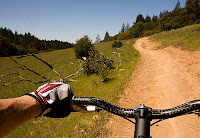Today, I have been recapping my knowledge on camera shots, angles and movement before I start to actually film my trailer. This is important because it has been a while since I have looked at camera shots and angles and because it is vital that I use a variety of camera shots and angles in my trailer, I need to know about the different shots and be able to use them.
Camera Movement
Camera Movement
TRACKING SHOT: Tracking in entices audience in to the scene. Tracking out allows the audience to know the narrative is over at this point and it will move onto the next part of the narrative
SIDE WAYS TRACK OR CRAB SHOT: Following action along- movement, keep pace.
TILT SHOT: Upwards; sense of height and power. Follow someone's point of view
ZOOM: Alternative to tracking shot
CRANE: High up. Enables director to follow action in a vertical direction
PANNING: Across ---> left to right or vice versa
Camera Shots
EXTREME LONG SHOT/ ESTABLISHING: Exterior, establishing time and setting
LONG SHOT: See character from head to toe. Relationship between character and their environment
MID SHOT: Waist up, enables audience to become more familiar with their character and the motivations within their character through their facial expressions and body language.
TWO SHOT: Two characters and their relationship with each other
CLOSE UP: Usually head and shoulders. Attention on character and their emotions. Frame an object of significance to the narrative
POINT OF VIEW: Someone's view point. Engage audience to their motives

EXTREME CLOSE UP: Tend to not overuse it, intense to audience. It draws audience further in to character's emotions. The attention is focused completely on character (eyes mostly)
No comments:
Post a Comment